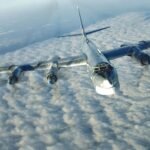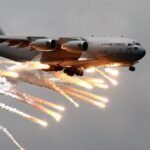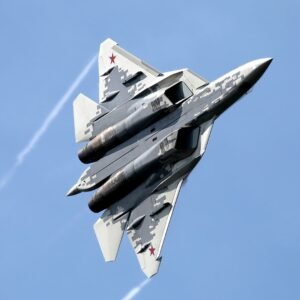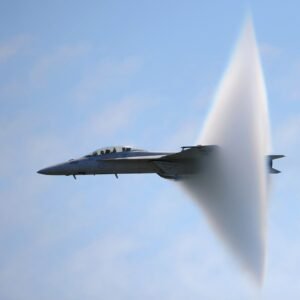The Boeing B52 Bomber is a subsonic, long-range, jet-powered strategic bomber. The B-52 was developed and manufactured by Boeing. It has been in service with the United States Air Force (USAF) since the 1950s and remains in use today. The Boeing B52 Bomber is a significant aircraft in the history of military aviation, and its development and use have had a significant impact on military operations, technology, and international relations. The B-52 Bomber has a distinct appearance, with its large, swept-wing design and eight engines. The Boeing B52 Bomber has been used for a variety of missions, including strategic bombing, reconnaissance, and more. It has played a key role in several major conflicts throughout its long history.

Design and Development Overview Boeing B52 Bomber
The development of the Boeing B52 Bomber began in the early 1940s, with the goal of creating a long-range strategic bomber capable of delivering nuclear weapons to the Soviet Union. The first prototype was completed in 1952, and the aircraft entered service with the USAF later that same year.
The B-52 Bomber has a distinctive design: a wingspan of 185 feet, a length of 159 feet, and a height of 40 feet. The Boeing B52 Bomber is powered by eight Pratt & Whitney turbofan engines. Over the years, the B-52 Bomber has undergone several upgrades and modifications to improve its capabilities and extend its lifespan. In the 1960s, the aircraft was upgraded with new engines and avionics systems. In the 1980s, it was modified to carry new missile systems. Change In the 1990s, B-52 was equipped with precision-guided munitions and other advanced technologies, making it even more effective in modern military operations.
Despite its age, the B-52 Bomber remains a critical component of the US military’s strategic bombing capabilities. The aircraft has proven to be highly adaptable. It has been able to remain relevant and effective through several decades of technological advancements and changing global conflicts.

What is The Operational History of The Boeing B-52 Bomber?
The B-52 Bomber has a long war history, having been used in several operations since its introduction in the 1950s.
- Cold War: the Bomber played a major role in maintaining the United States’ nuclear deterrent. The B-52 was used to alert missions and ensured that nuclear bombers were in the air at all times in case of a Soviet Union attack. it was also used in reconnaissance missions, gathering intelligence on Soviet targets.
- Vietnam War: The B-52 Bomber was heavily used during the Vietnam War, where it was primarily used to conduct carpet-bombing missions. In Operation Rolling Thunder, B-52s dropped over 5 million tons of bombs on North Vietnam, making it one of the most intensive bombing campaigns in history. B-52s were also used to support ground troops, dropping bombs on enemy positions and providing close air support.
- Gulf War: During the Gulf War in 1991, B-52s were used to conduct strategic bombing missions against Iraqi targets. The aircraft dropped a total of 84,000 tons of bombs during the conflict, including many precision-guided munitions. The B-52 was also used to destroy Iraqi armor and provide close air support to ground troops.
- War in Afghanistan: The B-52 has been used extensively in the War in Afghanistan, where it has been used to conduct strategic bombing missions against Taliban and Al-Qaeda targets. The aircraft has also been used to support ground troops, providing close air support and dropping bombs on enemy positions.
- War on Terror: In the ongoing War on Terror, the B-52 Bomber has been used to conduct airstrikes against terrorist targets in several countries, including Iraq, Syria, and Somalia. The aircraft has been used to destroy weapons caches, command centers, and other high-value targets.
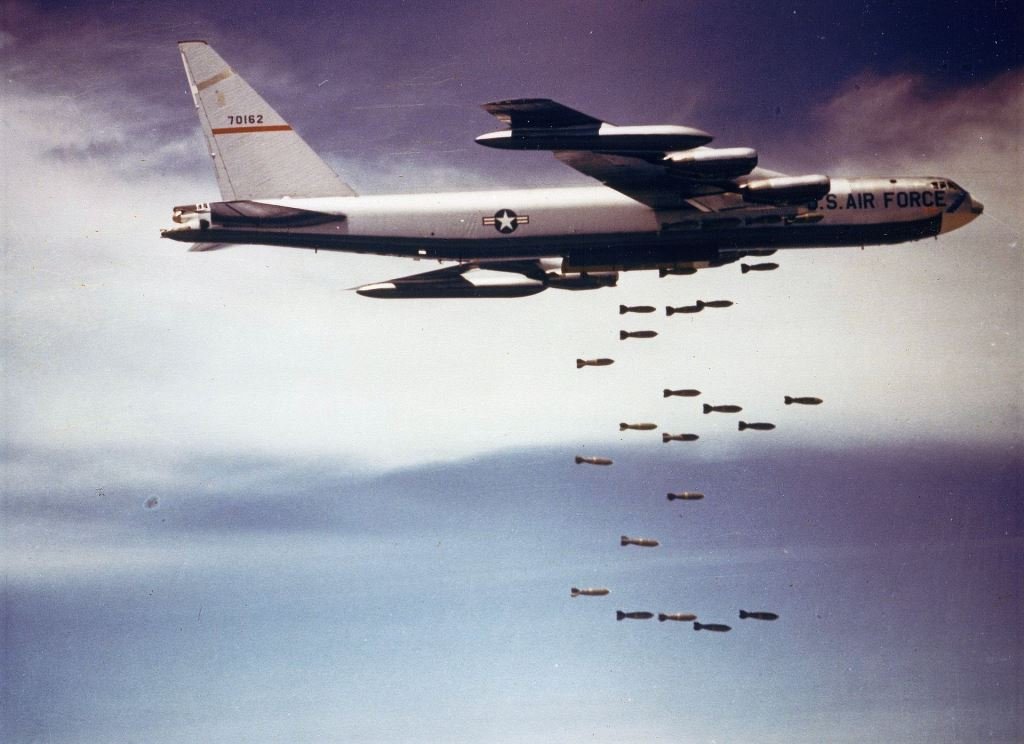
What is The General Specification of The Boeing B52 Bomber?
- Crew: The B-52 has a crew of five, including two pilots, two navigators, and one electronic warfare officer.
- Length: The B-52 has a length of 159 feet 4 inches (48.5 meters).
- Wingspan: The B-52 has a wingspan of 185 feet (56.4 meters).
- Height: The B-52 has a height of 40 feet 8 inches (12.4 meters).
- Maximum takeoff weight: The B-52 has a maximum takeoff weight of 488,000 pounds (221,350 kg).
- Maximum speed: The B-52 has a maximum speed of approximately 650 miles per hour (1,046 km/h).
- Range: The B-52 has a range of over 8,800 miles (14,080 km) without refueling.
- Engines: The B-52 is powered by eight Pratt & Whitney TF33-P-3/103 turbofan engines, each with a thrust of 17,000 pounds.
The Boeing B52 Bomber’s capabilities and specifications have evolved over time, with several upgrades and modifications to keep the aircraft relevant and effective in modern military operations.
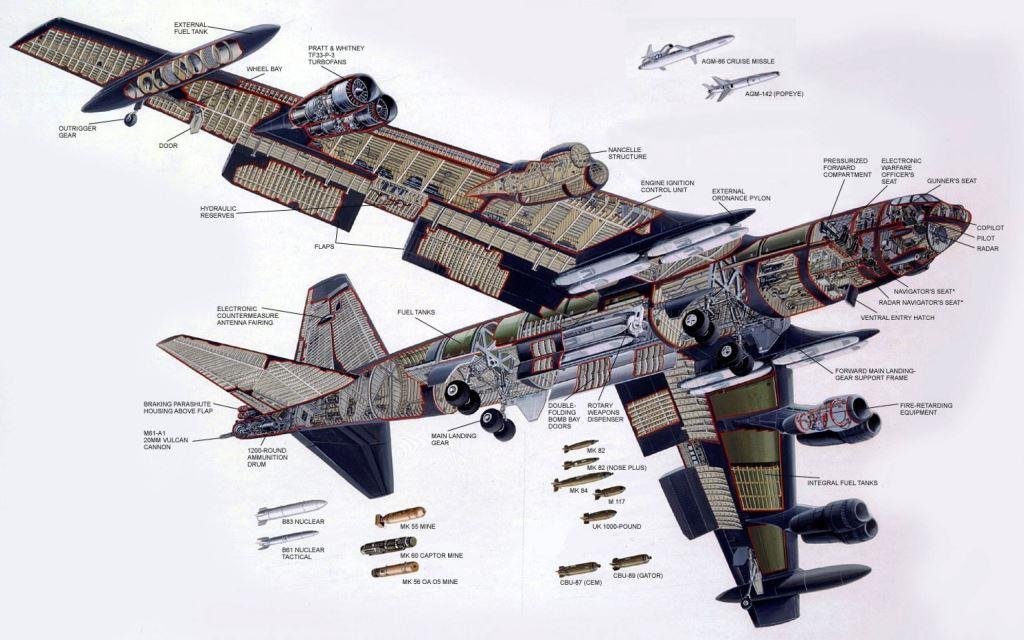
Avionics and Sensors
The Boeing B52 Bomber has undergone several avionics upgrades over the years to maintain its combat effectiveness. Here are some of the key avionics and sensor systems used in the current B-52H variant:
- Offensive avionics system: The offensive avionics system includes a variety of sensors and weapons delivery systems, including a radar altimeter, an inertial navigation system, and a terrain-following radar. The B-52H is also equipped with an electro-optical targeting system (EOTS) that provides real-time targeting information for the aircraft’s weapons systems.
- Defensive avionics system: The defensive avionics system includes a radar warning receiver, an electronic countermeasures system, and a missile warning system. The B-52H is also equipped with a chaff and flare dispenser system that can help evade enemy radar-guided missiles.
- Communication systems: The B-52H is equipped with a variety of communication systems, including high-frequency and ultra-high-frequency radios, satellite communications, and secure data links. The aircraft can communicate with ground control stations, other aircraft, and command and control centers.
- Navigation systems: The B-52H is equipped with a variety of navigation systems, including a GPS system, an inertial navigation system, and a ring laser gyrocompass. These systems allow the aircraft to navigate accurately and precisely to its target.
- Upgrades: The B-52H has undergone several avionics upgrades in recent years, including the installation of a digital flight deck and the integration of new communications and navigation systems. These upgrades have helped to modernize the B-52H and ensure that it remains a relevant and effective weapon system for modern military operations.
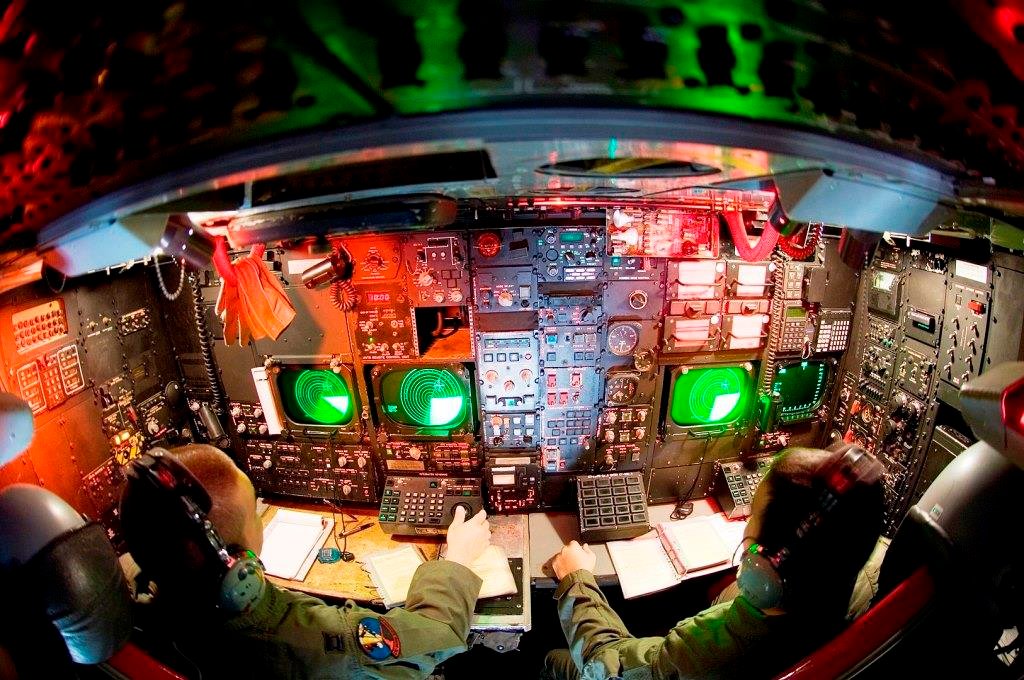
Armaments
The Boeing B52 Bomber is capable of carrying a wide range of conventional and nuclear weapons, including bombs, missiles, and other munitions. Here are some of the key armament systems used in the B-52H variant:
- Conventional bombs: The B-52H is capable of carrying a variety of conventional bombs, including the Mark 82, Mark 83, and Mark 84 bombs, as well as the GBU-38 Joint Direct Attack Munition (JDAM) and the GBU-31 JDAM. The aircraft can carry up to 70,000 pounds (31,500 kg) of bombs.
- Nuclear weapons: The B-52H is capable of carrying nuclear weapons, including the B61 and B83 nuclear bombs. The aircraft can carry up to 20 nuclear bombs.
- Cruise missiles: The B-52H is capable of carrying the AGM-86B Air-Launched Cruise Missile (ALCM), which has a range of over 1,500 miles (2,400 km) and can be armed with a nuclear or conventional warhead. The Boeing B-52H can carry more than 20 ALCMs.
- Standoff missiles: The B-52H is also capable of carrying the AGM-158 Joint Air-to-Surface Standoff Missile (JASSM), which has a range of over 500 miles (800 km) and can be armed with a conventional warhead. The B-52H can carry up to 12 JASSMs.
- Other munitions: The B-52H is also capable of carrying other munitions, including anti-ship missiles, cluster bombs, and air-to-air missiles.
The B-52H’s armament systems are designed for flexibility and versatility in a variety of mission environments. The conventional and nuclear bombs, along with the cruise and standoff missiles. It allows the B-52H to deliver precision strikes against enemy targets from long range. The other munitions provide additional capabilities to support ground forces.
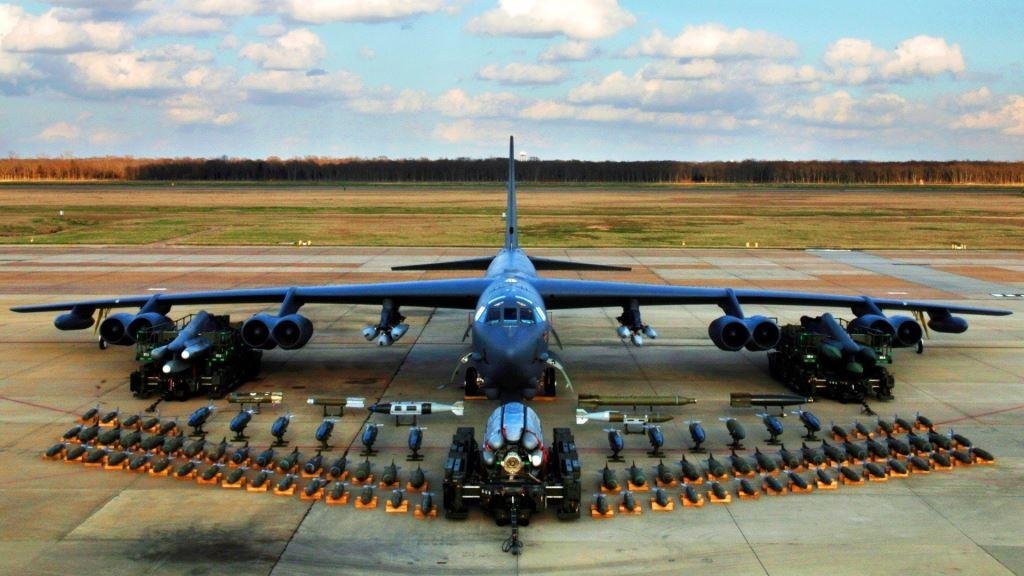
The Boeing B-52 Bomber Variants
The Boeing B-52 Stratofortress has gone through several variants throughout its history, each with its own unique capabilities and characteristics. Here are the main variants of the B-52:
- XB-52: The XB-52 was the prototype for the B-52 and first flew in 1952. It featured eight Pratt & Whitney J57 engines, a tandem cockpit, and a unique double tail.
- B-52A: The B-52A was the first production version of the B-52 and entered service in 1955. It was similar to the XB-52 but featured an updated avionics system.
- B-52B: The B-52B entered service in 1955 and featured improved engines, a strengthened airframe, and an increased fuel capacity. It was the first variant to be equipped with in-flight refueling capability.
- B-52C: The B-52C entered service in 1956 and featured more powerful engines, improved avionics, and an increased payload capacity.
- B-52D: The B-52D entered service in 1956 and featured upgraded engines, increased fuel capacity, and improved avionics. It was the first variant to be equipped with a low-altitude bombing system.
- B-52E: The B-52E entered service in 1957 and featured more powerful engines and an increased payload capacity.
- B-52F: The B-52F entered service in 1958 and featured upgraded engines, an increased fuel capacity, and an improved bombing system.
- B-52G: The B-52G entered service in 1961 and was the last B-52 variant to be equipped with nuclear weapons. It featured improved engines, upgraded avionics, and an increased payload capacity.
- B-52H: The B-52H entered service in 1961 and is the current production variant of the B-52. It features more powerful engines, advanced avionics, and an increased payload capacity. The B-52H is expected to remain in service until at least 2050.
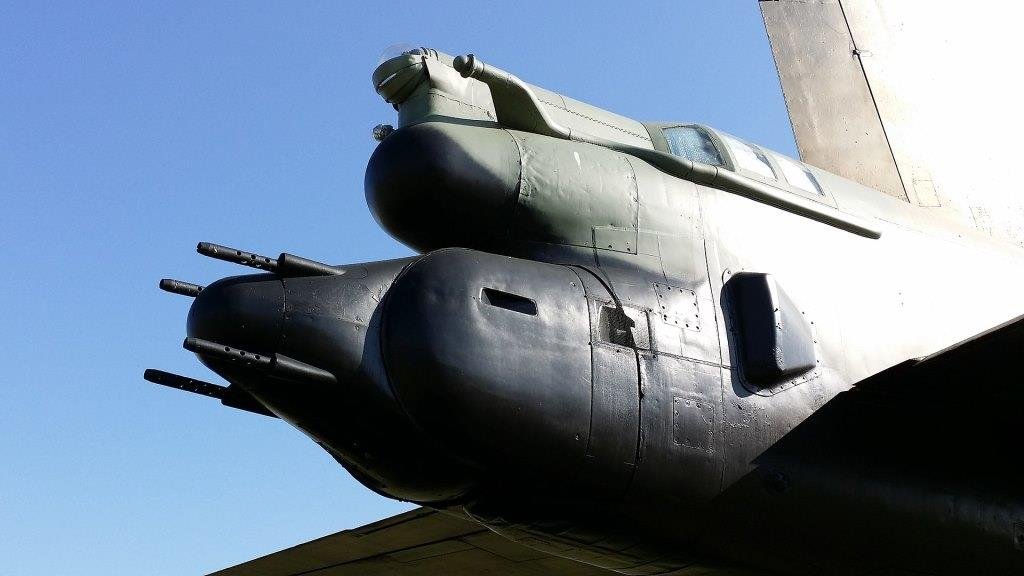
The Boeing B-52 Bomber Prototypes
The Boeing B52 Bomber Stratofortress went through several prototypes before entering production.
- XB-52: The XB-52 was the first prototype of the B-52 and made its first flight in April 1952. It was powered by eight Pratt & Whitney J57 turbojet engines and had a tandem cockpit, a double vertical tail, and a wingspan of 185 feet (56 meters). The XB-52 was used to test the B-52’s flight characteristics and performance.
- YB-52: The YB-52 was the second prototype of the B-52. It was built to test the aircraft’s structural integrity and flight handling. It was similar to the XB-52 but had a slightly different cockpit arrangement and a single vertical tail. The YB-52 made its first flight in November 1952.
- YB-52A: The YB-52A was the third prototype of the B-52 and was built to test the aircraft’s ability to carry and deliver nuclear weapons. It was similar to the YB-52 but had a modified bomb bay and was equipped with electronic countermeasures. The YB-52A made its first flight in September 1954.
- NB-52A: The NB-52A was a modified B-52A that was used as a testbed for various aircraft and propulsion systems. It was equipped with a pylon-mounted rocket engine and was used to launch experimental aircraft, including the X-15 rocket plane.
- NB-52B: The NB-52B was a modified B-52B that was used as a testbed for various aircraft and propulsion systems. It was similar to the NB-52A but was equipped with a more powerful rocket engine and was used to launch experimental aircraft, including the North American XB-70 Valkyrie.

Where are B-52 Bombers Stationed?
The Boeing B-52 Stratofortress is a long-range strategic bomber that is primarily operated by the United States Air Force (USAF). B-52 bombers are stationed at several air force bases across the United States.
The main bases where B-52 bombers are stationed include:
- Barksdale Air Force Base: Located in Louisiana, Barksdale Air Force Base is home to the USAF’s 2nd Bomb Wing, which operates B-52H bombers.
- Minot Air Force Base: Located in North Dakota, Minot Air Force Base is home to the USAF’s 5th Bomb Wing, which operates B-52H bombers.
- Ellsworth Air Force Base: Located in South Dakota, Ellsworth Air Force Base is home to the USAF’s 28th Bomb Wing, which operates B-1B and B-52H bombers.
- Andersen Air Force Base: Located in Guam, Andersen Air Force Base is home to the USAF’s 36th Wing, which operates B-52H bombers.
- RAF Fairford: Located in England, RAF Fairford is a forward operating base for the USAF’s bomber fleet, including the B-52H.
Boeing B52 bombers are also occasionally deployed to other locations around the world for training exercises or military operations. In recent years, B-52 bombers have been deployed to Europe, the Middle East, and the Pacific region to support various military operations and to demonstrate the United States’ commitment to its allies.
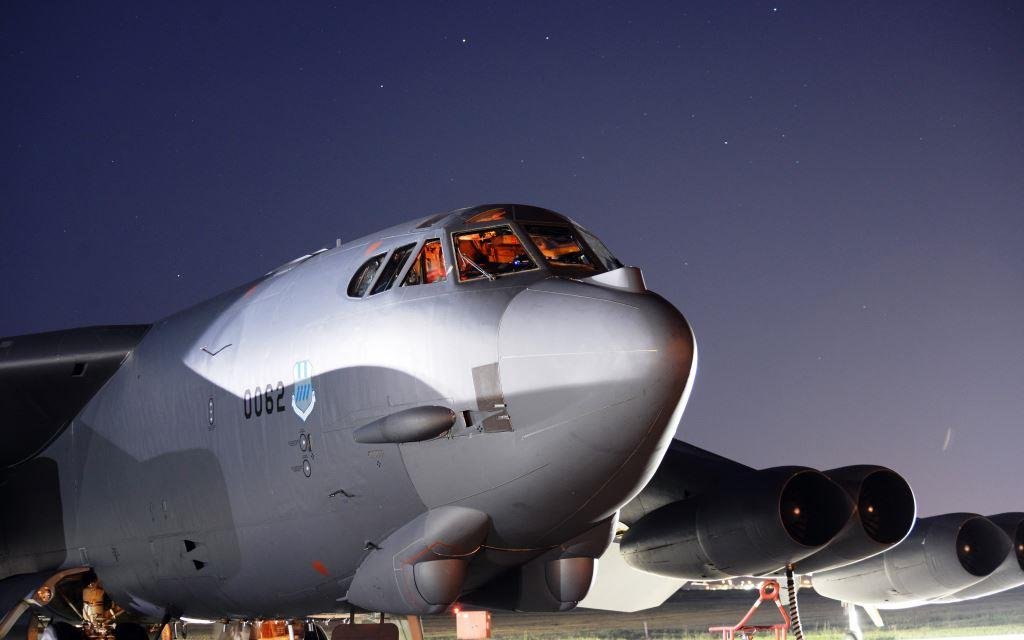
What is The Oldest Boeing B52 Bomber Still in Service?
The oldest B-52 still in service is a B-52H Stratofortress that was delivered to the USAF in May 1961. This aircraft is currently assigned to the 307th Bomb Wing at Barksdale Air Force Base in Louisiana.
While the B-52 fleet has undergone numerous upgrades and modifications over the years. Includes the installation of new avionics, engines, and weapons systems, many of the airframes themselves are over 50 years old. The Air Force has invested heavily in sustaining and modernizing the B-52 fleet to keep the aircraft relevant and effective in the modern era.
Do you Know About Tupolev Tu-95 Bomber and Boeing C17 Globemaster III?


